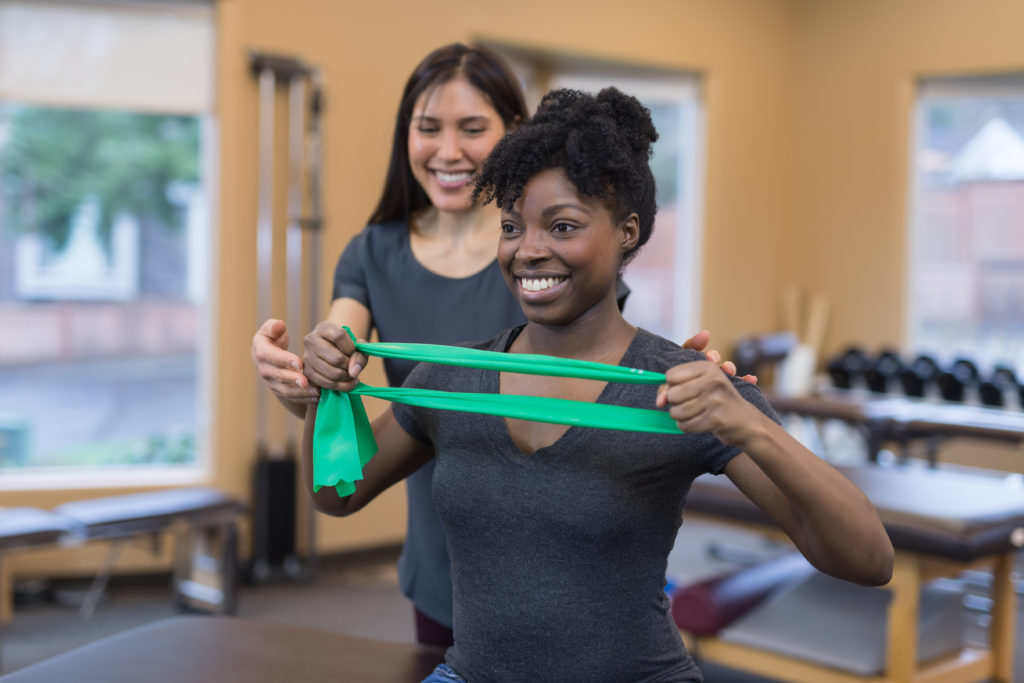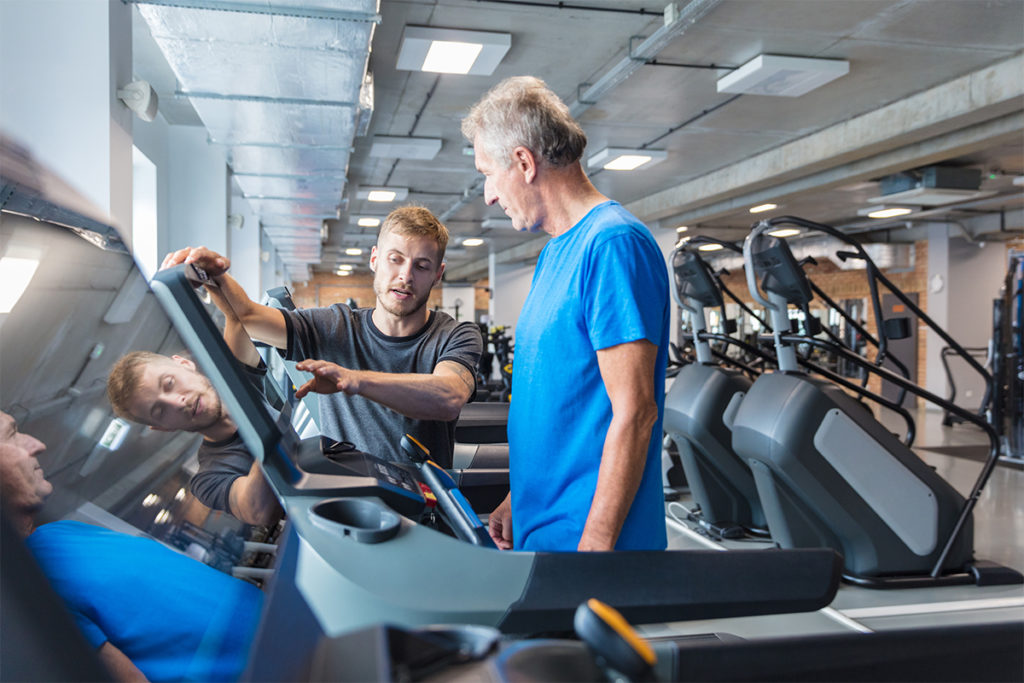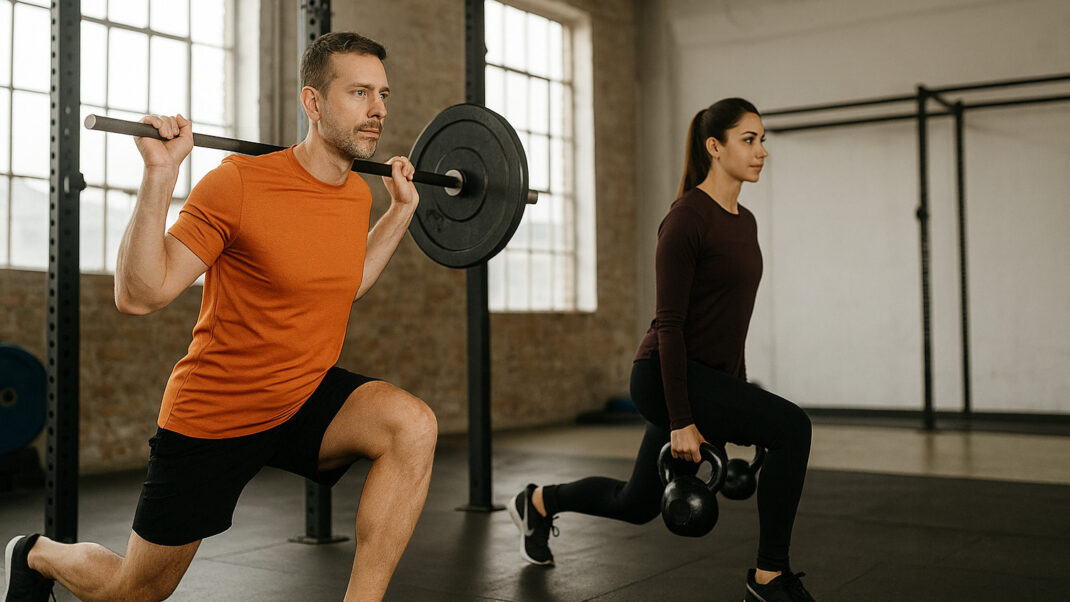Stroke Recovery Training
Stroke survivors need your help. Here’s what you can do.

Many trainers may believe that ongoing stroke recovery is either the sole purview of physical therapists or limited to those so infirm that progress is limited. But there is an opportunity to make a profound difference to survivors. And those survivors may look a little different than you expect. Rates of strokes in younger people are, in fact, rising. Research shows that rates have doubled for adults ages 35–39 (Swerdel et al. 2016).
“Every year, more than 795,000 people in the United States have a stroke,” says Tracy Markley, personal trainer and award-winning author of nine books about stroke recovery and the brain. “One in four people over age 25 will have a stroke, and about 58% of all strokes now happen to people 70 years and younger. There is a strong need in the fitness industry to learn about stroke recovery. It would help so many people, as well as [provide] a business niche.”
The Need for Stroke Recovery Services
Markley explains that while most stroke survivors initially receive physical therapy, those services are “extremely limited. Insurance companies only cover so many sessions. This leaves survivors either desperately searching for help from fitness professionals or having a false understanding that, when physical therapy ends, they have reached the end of how much they can recover. [But] physical therapy does not end because they are at their full recovery. It ends due to limits of sessions allowed by the insurance company rules.”
Charlie Hoolihan, director of personal training for the Pelican Athletic Club in Mandeville, Louisiana, agrees. “In fact, because rehabilitation insurance coverage tends to be limited, personal trainers well-versed in working with stroke survivors can play a crucial role in supporting their return to independent, active and functional daily living” (Hoolihan 2017).
See also: From Stroke to Strength.
Creating a Stroke Recovery Plan
The first step is gaining a deep understanding of anatomy and movement, says Markley. “We cannot help a stroke survivor gain a movement back if we do not know what muscles make the movement and what muscles assist in the movement,” she notes. “[Knowing about] proper posture and core strength is [also] essential.” Moreover, education is key for both trainers and clients.
Markley has written four stroke recovery books for survivors and their caregivers to help them understand this aspect of care (learn more at tracymarkley.com). She has developed a CEC course, as well. “The perfect match is a knowledgeable survivor and a knowledge fitness professional,” she explains.
Hoolihan adds that neuroplasticity—the brain’s ability to heal itself through thoughts, activities and neural-pathway rerouting—is another important factor in programming.
“Successful stroke survivors’ brains redirect signaling from damaged areas to other areas that normally have nothing to do with the recovered function (Doidge 2007 & 2016). Let’s say a stroke in the brain’s left hemisphere shuts down motion in the right leg. At first glance this looks like permanent paralysis, but it doesn’t have to be: Thanks to neuroplasticity, training can improve the leg’s strength and mobility because another portion of the brain has taken over the job. Brain scans have repeatedly demonstrated this rerouting phenomenon (Doidge 2007 & 2016).”
He offers a sample program for trainers to consider that helps in the stroke recovery process. And current research is showing that other tools, like vibration training, can improve strength.
Safety First
Once a trainer has the necessary education, the next step is to make sure the training is safe for the client. That’s true whether sessions are online or in person. “When training a survivor at home or at the gym, safety is the most important thing,” Markley advises. “When I train survivors via Zoom, only a few meet the safety guidelines I require. They are required to have a secure bar on their wall, proper equipment and [the ability] to coordinate watching the camera and me while exercising.”
Also, in a client’s home or at the gym, “it has to be set up for safety,” she says.
Most of all, Markley stresses that stroke recovery training is highly customized. “Each case is different. It is not a cookie-cutter program that can be applied to all cases. [Your program] has to become individualized for the needs and movements of that particular client.”
And the rewards? They’re as big as the challenges for trainers who want to help others thrive after a stroke.
References
Doidge, N. 2007. The Brain That Changes Itself: Stories of Personal Triumph from the Frontiers of Brain Science. New York: Viking.
Doidge, N. 2016. The Brain’s Way of Healing: Remarkable Discoveries and Recoveries from the Frontiers of Neuroplasticity. New York: Penguin.
Hoolihan, C., 2017. From stroke to strength. IDEA Fitness Journal. Accessed May 20, 2021: https://www.ideafit.com/personal-training/from-stroke-to-strength/.
Swerdel, J.N., et al. Ischemic Stroke Rate Increases in Young Adults: Evidence for a Generational Effect? Journal of the American Heart Association (2016; 5 [12], e004245.





